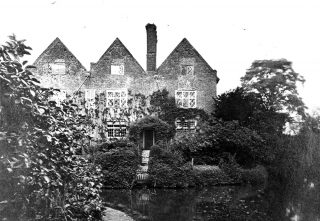the Grammar School. Professors Beebee and Dodge, though Democrats, were as ardent for the Union as President Eaton whose oratory was in frequent demand at public mass meetings.
At the commencement of 1864 Dr. Eaton refused to be depressed by “excitements and embarrassments of the hour”
and confidently asserted that it was a serious mistake to suppose the University “to be going down on account of the temporary withdrawal of students for soldiers.”
The losses, however, had been great and enrollment had fallen to approximately 100. The war had naturally prevented many from entering and large numbers had left the campus to join units from their home localities or had enlisted in those recruited from Hamilton. Though the actual count of students withdrawing from the University to join the army was only 40, it must be remembered that this figure was a large percentage of an enrollment which was never much higher than 200. In addition to 40 students, 70 alumni were also in service, many of them as chaplains. Thus 110 men, ten of whom were casualties, represented Madison University in the Union Army.
Since news of Lee’s surrender arrived during spring vacation, the University was unable to hold an appropriate demonstration. Students and faculty joined with the village, however, in celebrating the Fourth of July, 1865, which was the occasion for a public welcome of the returning local veterans. In anticipation of commencement, the Students Association had already asked Professor Osborn to deliver a memorial discourse on that occasion honoring those who had fallen during the war.
Commencements after 1850 continued to attract large crowds of guests intent on enjoying the week’s festivities, which, in Central New York parlance, have been described as a kind of “intellectual hop growers’ picnic.”
The bill of fare included meetings of the Education Society, alumni, the Society for Inquiry, and the literary societies, and the College and Seminary graduation exercises. Beginning in 1857, the Grammar School, also, had a commencement. Some of the sessions took place in West Hall chapel where the Latin mottoes on the walls, “God is in the midst of her, she shall not be moved”
and “No weapon formed against her shall prosper”,
reminded audiences of the unhappy Removal struggle. The Baptist Church, however, was usually the scene of the College and Seminary commencements until the auditorium in Alumni Hall was completed in 1861. The ceremony was sometimes





